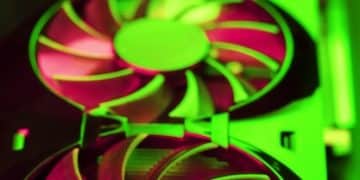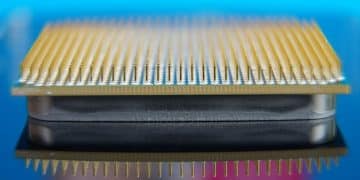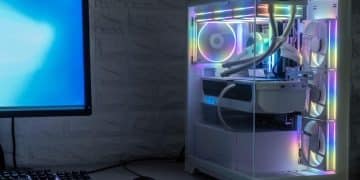Unlock GPU Performance: Overclock Safely in 2025
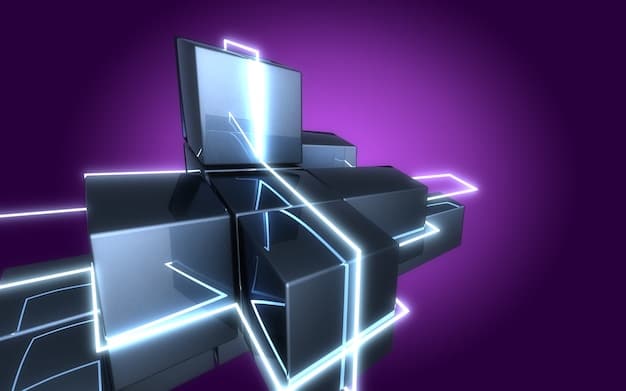
Overclocking a GPU in 2025 responsibly involves leveraging advanced software tools and understanding thermal limits to safely boost gaming performance without compromising hardware longevity, crucial for enthusiasts seeking optimal graphical fidelity and frame rates.
In the dynamic world of PC gaming, pushing hardware to its limits is a common pursuit. This guide will help you to Unlock Hidden Performance: Overclocking Your GPU Safely in 2025, transforming your gaming experience.
Understanding Overclocking: More Than Just Speed
Overclocking a Graphics Processing Unit (GPU) fundamentally means increasing its operating clock speed beyond its factory settings. This isn’t just about raw speed for its own sake; it’s about extracting additional frames per second (FPS) in games, enabling higher graphical settings, or preparing for future titles without immediately needing a hardware upgrade. The allure of overclocking lies in achieving a performance boost from existing hardware, translating into a smoother, more immersive gaming experience. It’s a precise process that, when done correctly, can offer significant rewards.
For enthusiasts, the pursuit of optimal performance often includes tweaking various parameters. This involves not only the core clock speed but also the memory clock, voltage, and fan curves. Each of these elements plays a crucial role in maintaining stability and preventing damage. As technology evolves, so do the methods and tools available for overclocking, making it more accessible yet still requiring a foundational understanding of the underlying principles. The goal is to find the “sweet spot” where performance gains are maximized without introducing instability or excessive heat.
What is GPU Overclocking?
GPU overclocking involves manually adjusting the clock speeds of your graphics card’s core and memory beyond their default specifications. This process aims to increase the processing power of the GPU, leading to higher frame rates and improved graphical fidelity in demanding applications and games. Think of it as fine-tuning an engine to get more horsepower. It’s a delicate balance of increasing capacity while managing potential stresses.
- Core Clock: Controls the speed at which the GPU processes graphical data.
- Memory Clock: Dictates the speed at which the GPU’s dedicated memory (VRAM) operates.
- Voltage: Supplying more power can stabilize higher clock speeds, but increases heat.
- Fan Curve: Adjusting fan speeds helps manage the increased heat generated by overclocking.
Why Overclock Your GPU?
The primary motivation for overclocking is to enhance gaming performance. Modern games are incredibly demanding, and even high-end GPUs can sometimes struggle to maintain high frame rates at maximum settings. Overclocking can bridge this gap, offering a tangible improvement in visual fluidity. Furthermore, it can extend the competitive lifespan of your current hardware, delaying the need for an expensive upgrade. It’s also a fascinating realm of PC tinkering, allowing users to explore the limits of their system’s capabilities.
Ultimately, successful overclocking transforms your gaming experience, making it smoother and more visually stunning. It’s a testament to the power of optimization and the intricate engineering behind graphics hardware, offering a deeper understanding of how your system truly performs under pressure.
Choosing the Right Tools and Software for 2025
Effective GPU overclocking in 2025 relies heavily on the right software tools. These applications provide the interface needed to adjust critical parameters, monitor performance, and ensure stability. While the core principles of overclocking remain consistent, the sophistication and user-friendliness of these tools have evolved significantly, making the process safer and more intuitive than ever before. Selecting reputable and feature-rich software is paramount to a successful and risk-free overclocking experience.
The landscape of overclocking software is dominated by a few key players, each offering unique advantages. These tools typically allow for precise control over clock speeds, voltage, and fan settings, alongside robust monitoring capabilities. Real-time data on temperature, usage, and clock speeds is vital for making informed adjustments and identifying potential issues before they become critical. It’s a continuous feedback loop that empowers the user to dial in the perfect settings for their specific hardware configuration.
Essential Overclocking Software
The industry standard for GPU overclocking is undeniably MSI Afterburner. While bearing the MSI brand, it is compatible with virtually all major GPU manufacturers, including NVIDIA and AMD. This versatility, combined with its comprehensive features, makes it a go-to choice for enthusiasts and beginners alike.
- MSI Afterburner: Offers granular control over core clock, memory clock, voltage, and fan speed. It also includes comprehensive monitoring overlays for real-time performance tracking. Its user interface is intuitive, making it a powerful yet accessible tool.
- EVGA Precision X1: A strong alternative, particularly for EVGA card owners. Precision X1 provides similar functionalities to Afterburner, often with a sleek, user-friendly interface optimized for EVGA hardware.
- AMD Radeon Software / NVIDIA GeForce Experience: While primarily drivers, these official software suites now include basic overclocking features and performance monitoring for their respective cards. They are a good starting point for those new to overclocking, offering a more guided and generally safer approach.
Benchmarking and Stress Testing Software
Overclocking is not complete without thoroughly testing your system for stability and performance gains. Benchmarking tools measure your GPU’s performance before and after overclocking, quantifying the improvements. Stress testing, on the other hand, pushes your GPU to its limits to ensure the overclock is stable under sustained load, preventing crashes during intense gaming sessions. These tools are critical for validating your adjustments and ensuring long-term reliability.
Using a combination of these tools ensures a stable and performance-optimized overclock. It’s an iterative process of adjusting, testing, and refining until the desired balance of speed and stability is achieved.
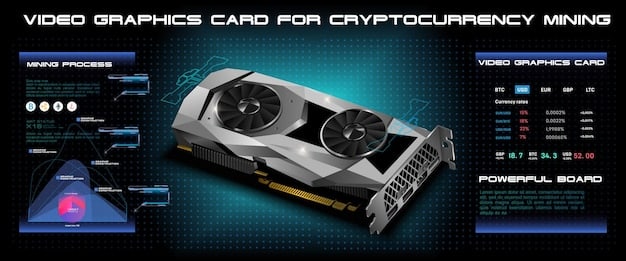
Pre-Overclocking Checks: Preparing Your System
Before you begin the process of overclocking your GPU, several crucial preparatory steps are necessary. Neglecting these checks can lead to system instability, reduced hardware lifespan, or even irreversible damage. Overclocking introduces additional heat and power demands, so ensuring your system’s foundation is solid is paramount. This initial phase is about creating an optimal environment for your GPU to perform beyond its factory specifications, emphasizing proper cooling and power delivery.
Preparation is key to minimizing risks. It involves understanding your system’s current thermal performance, ensuring adequate power supply, and having the latest drivers installed. These elements form the bedrock of a stable overclock. Rushing into the process without due diligence can lead to frustrating crashes and potential hardware issues, making a methodical approach essential for both performance gains and hardware longevity.
Ensure Adequate Cooling
Heat is the absolute enemy of electronics, and overclocking generates more of it. Before you even think about adjusting clock speeds, your cooling solution must be up to the task. This involves both your GPU’s cooler and your PC case’s airflow. A well-ventilated case with strategically placed fans can significantly improve thermal performance. Consider upgrading your GPU’s cooler or investing in an aftermarket solution if your temperatures are already high at stock settings. Lower temperatures directly correlate with better stability and higher potential overclocks.
Monitoring your GPU temperatures before and during the overclocking process is non-negotiable. Tools like MSI Afterburner or HWMonitor can provide real-time temperature readings, helping you identify potential overheating issues early.
Verify Your Power Supply Unit (PSU)
Overclocking increases the power consumption of your GPU. Your Power Supply Unit (PSU) must have sufficient wattage to handle this increased demand, plus headroom for other components. An underpowered PSU can lead to system instability, crashes, or even damage to components. Check your GPU’s recommended PSU wattage and ensure your current PSU exceeds it, ideally with a significant buffer. Look for PSUs with 80 PLUS certification, indicating higher efficiency, which also helps in heat management.
A stable and robust power delivery system is as crucial as effective cooling. It ensures your GPU receives consistent and clean power, which is vital when pushing it beyond its normal operating parameters.
Update Drivers and BIOS/UEFI
Outdated graphics drivers are a common cause of instability and poor performance, especially when overclocking. Always ensure you have the latest stable drivers installed directly from NVIDIA or AMD’s official websites. These updates often include performance optimizations and bug fixes that can indirectly benefit overclocking stability. Similarly, check for updated motherboard BIOS/UEFI versions, as they can sometimes improve system stability and compatibility with new hardware or software.
A fully updated system provides the best baseline for a successful overclock. It minimizes the variables that could lead to unexpected issues, allowing you to focus purely on the overclocking process itself.
The Overclocking Process: A Step-by-Step Guide
Overclocking a GPU is an iterative process of incremental adjustments followed by rigorous testing. It’s not something to be rushed; patience and attention to detail are paramount. The goal is to find the maximum stable clocks for your specific card without compromising its lifespan. This guide outlines a methodical approach, emphasizing safety and stability at each stage. Remember, every GPU is unique, and what works for one card may not work for another, even if they are the same model.
This section will walk you through the practical steps, from setting your baseline to adjusting core and memory clocks, managing voltage, and fine-tuning fan curves. It’s a dance between pushing performance and maintaining thermal integrity, a balance that is constantly being refined throughout the process.
1. Establish a Baseline
Before making any changes, it’s crucial to establish your GPU’s baseline performance and thermal characteristics at stock settings. Run a demanding game or a synthetic benchmark (like 3DMark or Heaven Benchmark) for at least 15-30 minutes. Monitor your GPU’s core clock speed, memory clock speed, temperature, and power consumption using MSI Afterburner’s monitoring overlay. Pay close attention to the maximum temperature reached during load. This baseline provides a reference point for measuring improvement and identifying any pre-existing issues.
Knowing your starting performance and thermal limits is essential for judging the effectiveness and safety of your overclocking efforts.
2. Adjust Core Clock Gradually
Begin by increasing the GPU’s core clock speed in small increments, typically +10 MHz or +15 MHz at a time. After each increment, run a stress test or a demanding game for 15-20 minutes. Watch for artifacts (visual glitches like flickering textures or strange colors), crashes, or freezes. If your system remains stable, increase the core clock again. The moment you encounter instability or artifacts, dial back the core clock to the last stable setting. This is your maximum stable core clock.
The process is about finding the limit of your GPU’s core performance before it becomes unstable. It requires patience and careful observation.
3. Adjust Memory Clock Gradually
Once you’ve found your stable core clock, repeat the gradual adjustment process for the memory clock. Increase it in small increments (e.g., +25 MHz to +50 MHz at a time) and test after each adjustment. Memory overclocks manifest instability differently than core overclocks; often, they present as visual artifacts before a full crash. Look for strange textures, pixelation, or general graphical corruption. Back off the memory clock to the last stable setting if you see any anomalies.
Finding the optimal memory clock can further boost performance, especially in textures and high-resolution gaming.
4. Adjust Voltage (Optional and Advanced)
Increasing the core voltage can sometimes stabilize higher core clock speeds, but it significantly increases heat generation. This step is generally recommended only for experienced overclockers with robust cooling solutions. If you choose to adjust voltage, do so in the smallest possible increments and monitor temperatures meticulously. Excessive voltage can lead to irreversible damage or significantly shorten your GPU’s lifespan. For most users, it’s safer to stick to stock voltage or minimal increases if stability issues persist.
Proceed with extreme caution if you decide to touch voltage settings.
5. Fine-Tune Fan Curve
With increased clock speeds and potentially voltage, your GPU will generate more heat. A custom fan curve ensures your cooler works optimally to dissipate this heat, preventing thermal throttling (where the GPU automatically reduces clock speeds to cool down). Use MSI Afterburner’s fan curve editor to set aggressive fan speeds at higher temperatures. For instance, you might set fans to 80% at 70°C and 100% at 80°C. While this will make your fans louder, it’s crucial for maintaining stability and performance.
Consider the noise level vs. performance trade-off. An aggressive fan curve keeps temperatures low, but at the cost of increased fan noise. Find a balance that suits your preferences and cooling capabilities.
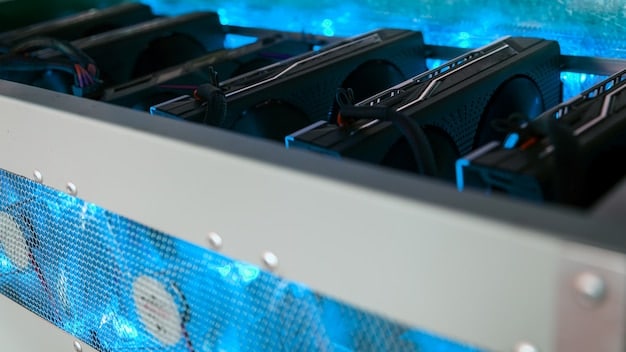
Post-Overclocking Validation and Maintenance
After diligently finding your optimal overclock settings, the process isn’t truly complete. Validation is the final, critical step to ensure that your carefully tuned GPU remains stable and performs as expected under real-world conditions. This involves extended stress testing and real-gaming scenarios, confirming that the performance gains are sustained and free from unexpected issues. Ongoing maintenance also plays a vital role in preserving the benefits of your overclock and extending the lifespan of your hardware.
Ignoring post-overclocking validation and maintenance can lead to frustrating crashes during intense gaming or, worse, long-term hardware degradation. A robust testing regimen combined with regular upkeep will ensure your overclocked GPU delivers consistent, top-tier performance for years to come, making your initial efforts truly worthwhile.
Extended Stress Testing
Once you’ve achieved what appears to be a stable overclock, it’s imperative to subject your GPU to extended stress testing. Run benchmarks like FurMark, demanding game sessions, or dedicated stress test utilities for at least 1-2 hours. This prolonged load helps uncover any latent instabilities that might not manifest during shorter tests. Monitor temperatures and clock speeds throughout this period to ensure consistency and identify any thermal throttling. If crashes occur, revert to the last stable settings.
This long-duration testing is the ultimate litmus test for your overclock’s stability.
Real-World Gaming Performance
The ultimate goal of GPU overclocking is to enhance your gaming experience. After stress testing, spend several hours playing your favorite demanding games. Pay attention to frame rates, visual quality (look for artifacts), and overall system responsiveness. If you experience any crashes, freezes, or unusual visual glitches, it indicates that your overclock is not truly stable in real-world scenarios. You may need to slightly dial back your core or memory clocks until complete stability is achieved.
Real-world gaming provides the most accurate assessment of your overclock’s effectiveness in its intended environment.
Monitoring and Maintenance
Even after a successful overclock, continuous monitoring is advised. Regularly check your GPU temperatures, clock speeds, and fan behavior, especially during demanding sessions. Over time, dust accumulation in your PC case and on your GPU’s cooler can impede airflow, leading to increased temperatures.
- Regular Cleaning: Dust your PC components, especially GPU fans and heatsinks, every few months.
- Thermal Paste: Consider reapplying fresh thermal paste to your GPU every 2-3 years, as it can dry out and become less effective, especially on heavily overclocked cards.
- Software Updates: Keep your GPU drivers and overclocking software updated, as new versions often bring stability improvements and new features.
Safe Practices and Potential Risks in 2025
While modern GPUs are built with safeguards against extensive damage from overclocking (e.g., automatic thermal throttling), risks still exist. The primary concerns revolve around hardware degradation due to excessive heat and voltage. Over time, high temperatures can shorten the lifespan of electronic components, making proper cooling paramount. Similarly, providing too much voltage can put undue stress on the GPU’s delicate circuitry, potentially leading to immediate failure or accelerated degradation.
It’s also important to acknowledge that overclocking, even if done safely, typically voids your GPU’s warranty. While a safe overclock is unlikely to cause immediate failure, manufacturers are usually unwilling to cover components pushed beyond their factory specifications. Always proceed with an understanding of these risks. Start with small adjustments, monitor diligently, and never push beyond what your cooling solution can handle. The aim is enhanced performance, not hardware destruction. Patience and caution are your best allies in this endeavor.
Modern GPUs incorporate impressive thermal and power limits that act as safety nets, but these are not foolproof. Pushing components constantly to their very edge can, over extended periods, lead to unforeseen issues. The “safely” in “overclocking safely” truly emphasizes a methodical, conservative approach that prioritizes long-term stability over marginal, unstable gains.
| Key Point | Brief Description |
|---|---|
| 🚀 Performance Boost | Significantly increase FPS and graphical fidelity in games. |
| 🛠️ Essential Tools | MSI Afterburner, EVGA Precision X1, and various benchmarks. |
| 🌡️ Cooling Critical | Adequate cooling prevents thermal throttling and hardware damage. |
| ⚡ Voltage Caution | Adjusting voltage requires expertise due to increased heat and risk. |
Frequently Asked Questions
▼
Safely executed overclocking, especially with good cooling and without excessive voltage, is unlikely to significantly reduce your GPU’s lifespan. However, constantly running at very high temperatures or unstable settings can accelerate degradation. Modern GPUs have built-in safeguards, but caution is essential.
▼
Yes, but be aware that overclocking typically voids your manufacturer’s warranty. If you are comfortable with this risk and follow safe overclocking practices, a new GPU can usually handle it well. Always test incrementally and ensure your cooling system is robust enough.
▼
Signs of an unstable overclock include visual artifacts (flickering, odd colors, pixelation), game crashes, system freezes, and driver timeouts. If you experience any of these, immediately reduce your clock speeds and re-test for stability to prevent potential harm to your hardware.
▼
While not always strictly necessary for light overclocks, an enhanced cooling solution (e.g., custom fan curves, aftermarket coolers, or liquid cooling) is highly recommended. It allows for higher stable clock speeds and ensures component longevity by keeping temperatures in check under load.
▼
Overclocking primarily benefits GPU-bound games, where performance is limited by the graphics card’s processing power. CPU-bound games might see less improvement. The actual performance gain varies greatly depending on the game, your specific GPU, and the extent of your stable overclock.
Conclusion
Overclocking your GPU can be a rewarding endeavor, offering a significant performance boost and extending the competitive life of your hardware. By understanding the underlying principles, utilizing the right software, and meticulously following safe practices, you can unlock hidden performance from your graphics card in 2025. Remember, patience, incremental adjustments, and rigorous testing are key to achieving a stable and beneficial overclock. Prioritize cooling and power delivery, and your GPU will serve you well, delivering a smoother, more immersive gaming experience.
